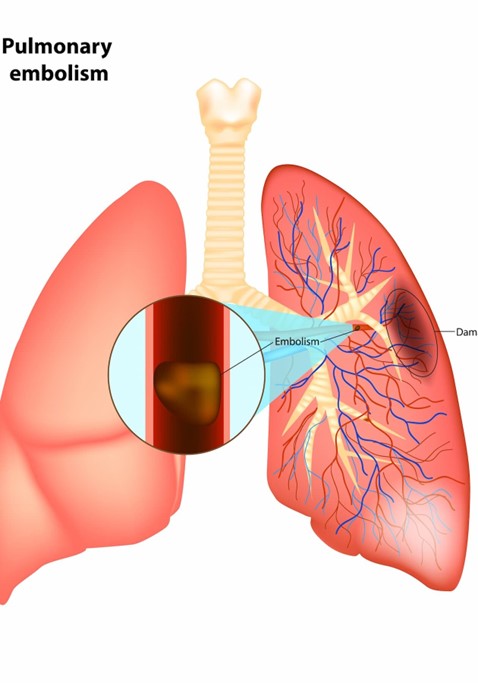Which laboratory results should the nurse closely monitor in a client who has end-stage renal disease (ESRD.?
Blood pressure, heart rate, and temperature.
Leukocytes, neutrophils, and thyroxine.
Serum potassium, calcium, and phosphorus.
Erythrocytes, hemoglobin, and hematocrit.
The Correct Answer is C
Choice C is correct because serum potassium, calcium, and phosphorus are electrolytes that can be affected by ESRD. ESRD is a condition in which the kidneys lose their ability to filter waste products and excess fluids from the blood. This can cause electrolyte imbalances that can lead to serious complications, such as cardiac arrhythmias, bone disorders, or metabolic acidosis. The nurse should closely monitor these electrolytes and report any abnormal values.
Choice A is incorrect because blood pressure, heart rate, and temperature are vital signs that are not specific to ESRD. Vital signs can be influenced by many factors and may not reflect the severity of kidney damage. The nurse should monitor vital signs regularly, but not as closely as electrolytes.
Choice B is incorrect because leukocytes, neutrophils, and thyroxine are not laboratory results that are directly related to ESRD. Leukocytes and neutrophils are types of white blood cells that are involved in immune response and inflammation. Thyroxine is a hormone that regulates metabolism and growth. These laboratory results may be altered by other conditions or medications, but not by ESRD.
Choice D is incorrect because erythrocytes, hemoglobin, and hematocrit are laboratory results that measure the red blood cell count and oxygen-carrying capacity of the blood. These laboratory results may be decreased in ESRD due to anemia, which is a common complication of chronic kidney disease. However, anemia is not as life-threatening as electrolyte imbalances and can be treated with erythropoietin injections or iron supplements.
Nursing Test Bank
Naxlex Comprehensive Predictor Exams
Related Questions
Correct Answer is D
Explanation
The correct answer is: c. Leave the light on in the room at night.
Choice A: Replace the IV catheter with a smaller gauge
Replacing the IV catheter with a smaller gauge is not directly addressing the issue of the client’s confusion and agitation. While a smaller gauge might be less irritating, it does not solve the problem of the client picking at the IV site. The pinkness at the IV site suggests mild irritation or early signs of phlebitis, which can be managed by monitoring and ensuring proper securement and care of the IV site.
Choice B: Apply soft bilateral wrist restraints
Applying wrist restraints should be a last resort due to the potential for causing distress, agitation, and physical harm to the patient. Restraints can lead to negative outcomes such as decreased circulation, pressure ulcers, and increased agitation, especially in patients with dementia. It is generally recommended to use less restrictive measures first.
Choice C: Leave the light on in the room at night
Leaving the light on in the room at night (C) can help reduce confusion and agitation in dementia patients, a phenomenon known as sundowning. However, it does not address the immediate issue of the non-occlusive dressing and the pink IV insertion site.
Choice D: Redress the abdominal incision
Given the situation, the most appropriate intervention would be to redress the abdominal incision (D). This is because the dressing is no longer occlusive, which can increase the risk of infection. Ensuring the dressing is secure and clean is crucial for the patient's safety.
Correct Answer is C
Explanation
Choice C is correct because providing supplemental oxygen is the first action that the nurse should take for a client who has a suspected pulmonary embolus. A pulmonary embolus is a life-threatening condition that occurs when a blood clot travels to the lungs and blocks the blood flow, causing hypoxia and respiratory distress. The nurse should administer oxygen to improve the client's oxygenation and prevent further complications.
Choice A is incorrect because notifying the healthcare provider is not the first action that the nurse should take for a client who has a suspected pulmonary embolus. The nurse should notify the healthcare provider after providing supplemental oxygen and assessing the client's vital signs and symptoms.
Choice B is incorrect because preparing a continuous heparin infusion per protocol is not the first action that the nurse should take for a client who has a suspected pulmonary embolus. Heparin is an anticoagulant that can prevent further clot formation and reduce the risk of recurrence, but it does not dissolve existing clots or improve oxygenation. The nurse should prepare a heparin infusion after obtaining a prescription from the healthcare provider and confirming the diagnosis with diagnostic tests.
Choice D is incorrect because bringing the emergency crash cart to the bedside is not the first action that the nurse should take for a client who has a suspected pulmonary embolus. The emergency crash cart contains equipment and medications that can be used in case of cardiac arrest or other emergencies, but it does not address the immediate need of oxygenation. The nurse should bring the emergency crash cart to the bedside after providing supplemental oxygen and assessing the client's condition.

Whether you are a student looking to ace your exams or a practicing nurse seeking to enhance your expertise , our nursing education contents will empower you with the confidence and competence to make a difference in the lives of patients and become a respected leader in the healthcare field.
Visit Naxlex, invest in your future and unlock endless possibilities with our unparalleled nursing education contents today
Report Wrong Answer on the Current Question
Do you disagree with the answer? If yes, what is your expected answer? Explain.
Kindly be descriptive with the issue you are facing.
